Inside the experimental world of animal infrastructure
In the mid-2000s, toads were meeting a gruesome end near Ede, an old, leafy town in the middle of the Netherlands. Local residents came to the rescue. For a few weeks each spring, the town erected a set of temporary fences along a kilometer or so of road, in an area where the animals crossed over from their winter habitat in the south to three breeding ponds in the north. When the toads hit the barrier, they'd hop sideways for a few meters until they dropped into a bucket, one of 36 pitfall traps that lined the fence.
Every day, volunteers would diligently carry the toads to the other side and send them on their way. It was a crude, somewhat laborious way of mitigating the hardship of being an amphibian in a world built for humans. But it was a lifeline that Ede residents were happy to provide for their warty neighbors-which, like so many other species worldwide, have suffered difficulties feeding, breeding, and migrating as their familiar landscape is carved apart by human infrastructure.
What followed has taken on the air of a cautionary fable among a small international community of ecologists and ecological designers. A few years in, Ede decided to swap its ad hoc screens for permanent barriers and replace the three dozen buckets with a pair of wildlife tunnels passing under the road. For ecologist Edgar van der Grift and other scientists monitoring the change, it was clear that the underpasses were popular. Many toads hopped happily toward their breeding ponds-even finding occasion to copulate mid-journey, a 2019 study notes.
But when the researchers studied the effect that this new infrastructure was having on the toad population, they were alarmed by the results. We saw a crash," says van der Grift, one of the world's leading experts in wildlife crossing structures. In five, six years, the population went down from over 10,000 individuals to less than 1,000." In the years since, van der Grift has persuaded Ede to add a third tunnel, in a heavily frequented spot along the road. But discussions are still ongoing about how to reverse Ede's dwindling numbers.
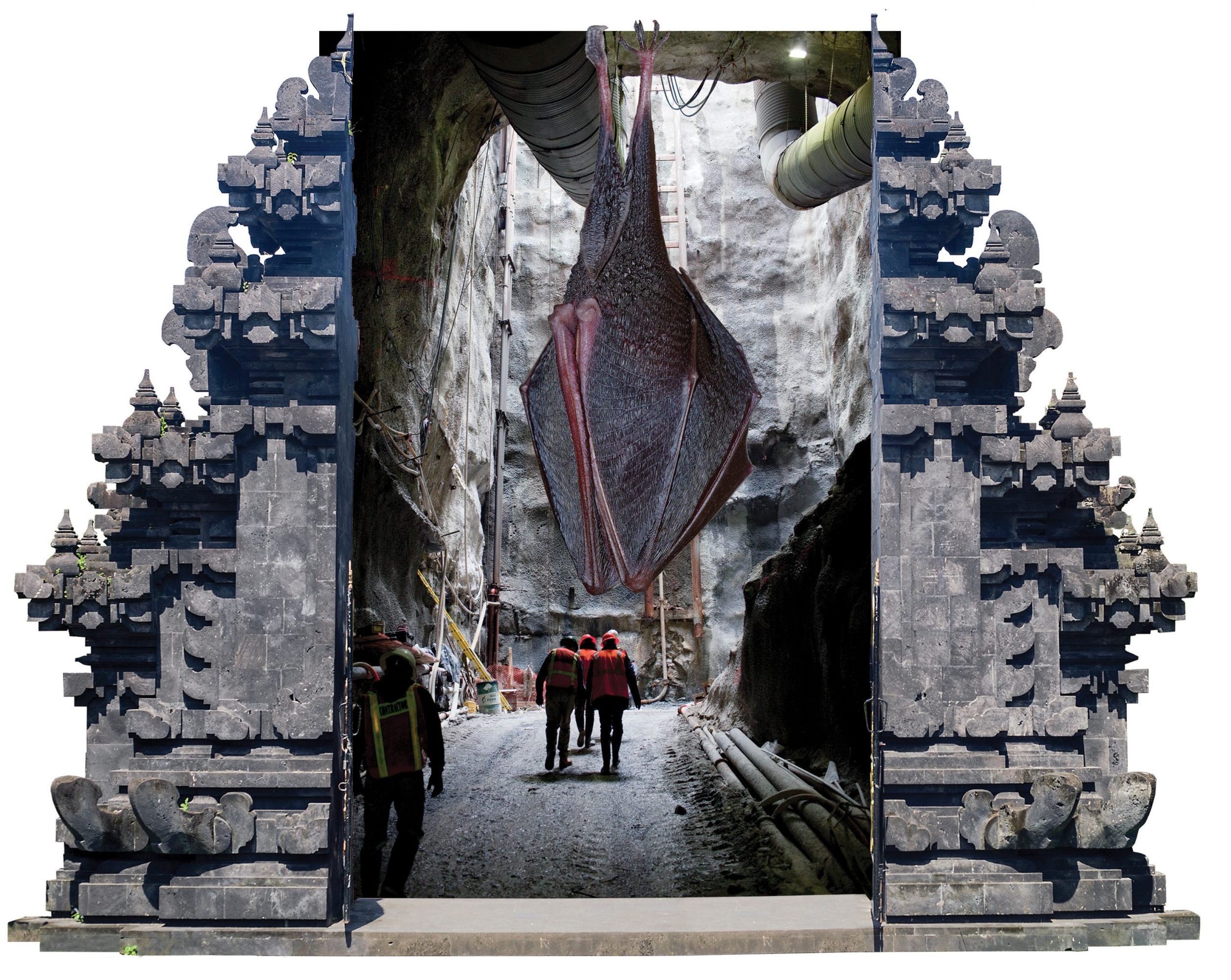 ANDREW MERRITT
ANDREW MERRITTFor advocates of wildlife crossings, any such sign of failure inevitably sets alarm bells ringing far and wide. Countries have started to invest big in these bridges and tunnels. President Biden's November infrastructure bill allocated a landmark $350 million investment in animal crossings across the US, where some estimate roughly 1 million vertebrate animals die each day. In April, the National Wildlife Federation broke ground on a pioneering urban bridge-a $90 million custom-designed acre of wilderness" that will float across 10 lanes of the US 101 freeway, linking two islands of mountain lion habitat north of Los Angeles. Early adopters Canada and the Netherlands are already home to decades-old networks of road-spanning projects, with arcs of chaotic forest reaching over highways. Australia, Brazil, China, and South Africa are following suit, hoping they can avoid the fate of seeing natural habitats sliced into sickly, disjointed fragments.
Around the world, cities are building a huge variety of structures intended to mitigate the impacts of urbanization and roadbuilding on wildlife. The list includes green roofs, tree-lined skyscrapers, living seawalls, artificial wetlands, and all manner of shelters and hibernacula," including 3D-printed hempcrete birdboxes for endangered owls in Melbourne and gigantic bat caves constructed like earthen igloos in the Texas hills.
But the data on how effective these approaches are remains patchy and unclear. That is true even for wildlife crossings, the best-studied and most heavily funded example of such animal infrastructure. Though road ecologists know these crossings can play a vital role in reducing roadkill, the story of their impact on wildlife conservation is still being told. This question is only growing more urgent: to meet the UN Sustainable Development Goals by 2040, a projected $97 trillion tsunami" of new roads, railways, pipelines, and power lines will be needed, which would in effect double human infrastructure from 2012 levels, according to the World Wildlife Fund. That would put even more pressure on global biodiversity; one-sixth of all species at risk of extinction are threatened by human infrastructure development.
Wildlife crossings certainly look like success stories. Every day, remote-sensing cameras beam back images of animals taking advantage of them. There are the eager pioneers, like roe deer and foxes, which cross even before construction is completed. There are shy holdouts, like gray wolves or grizzly bears, which might take generations to become users. At Singapore's Mandai Wildlife Bridge, a total of 70 species-including pangolins, sambar deer, long-tailed macaques, fruit bats, and red jungle fowl (a close relative of the domestic chicken)-have crossed the road.
Ten seconds after they're open, there's animals using them," says Darryl Jones, the author of A Clouded Leopard in the Middle of the Road, which tells the stories of deadly highways and lifesaving crossings from Brisbane, Australia, to Alberta, Canada. The big new question now is-and this is the valid question-So what? Does that actually make a difference?"
It takes less than half an hour by train to get from Amsterdam to the Gooi, a region of historic villages and medieval fortified settlements that's home to the Dutch TV industry. But this short ride takes you across one of the most intensively engineered landscapes on earth: over railroad girder bridges, across shipping canals, past windmills-both ancient stone structures and today's tubular steel turbines-and expanses of fields created by the polder-dike system that transformed the country's natural marshy wetlands into productive farmland.
For those interested in learning about the limits of wildlife crossings, the Gooi is a good place to start. The region boasts one of the world's densest collections of such infrastructure, with four bridges, two major underpasses, and a network of tunnels for badgers, amphibians, and reptiles, all within about 10 minutes' drive from the quaint local capital of Hilversum.
As van der Grift walks along the deck of one of these bridges, he points out fox droppings, blue herons, and trails where groups of roe deer walk in single file, retracing their footsteps each day. From this point, atop the bridge, the six-lane highway below is invisible, shielded by the raised banks or berms" on either side. But it can be heard, despite efforts to dampen the noise with the foliage of local beech and spruce. The crossing is studded with ponds, close enough together for toads to comfortably hop their way from one to the next.
The Netherlands built its first wildlife bridges to stop deer from becoming roadkill. But in the 1990s, the country began to shift to a more holistic ecological mindset, using bridges to link fragments of protected areas. In 2005 the Dutch parliament made such defragmentation" a long-term nationwide policy, known as MJPO in Dutch. The program marked a shift to a strategic conservation-driven agenda, one that prioritized helping a broad sweep of species-including reptiles, bats, and butterflies-to move across the human-altered landscape. In modeling carried out for the Dutch transport ministry, van der Grift identified 215 bottlenecks where species struggled to pass, flagging them as places where crossings could make the greatest difference. Today there are 70 wildlife bridges in the country and more than 2,000 other structures, such as badger tunnels, rope bridges between trees, and aquatic underpasses.
To understand the real value a bridge has, it is important to step back and see the damage that arrives with each tarmac carriageway, says van der Grift, a gentle giant with a dry sense of humor earned in two decades of trying-with mixed results-to thwart animals' seemingly insatiable desire to throw themselves under cars. A road forms a barrier, one that animals either can't or do not want to traverse. It inhibits animals to cross and to get in contact with each other," van der Grift says. The effects go far beyond roadkill. If the barrier is significant enough, it can make entire animal populations less viable, prone to inbreeding and decline.
Wildlife crossings can reduce this barrier effect, the thinking goes, making the road more permeable for a range of species. But few studies so far have been able to say conclusively whether this is really happening or not, he explains.
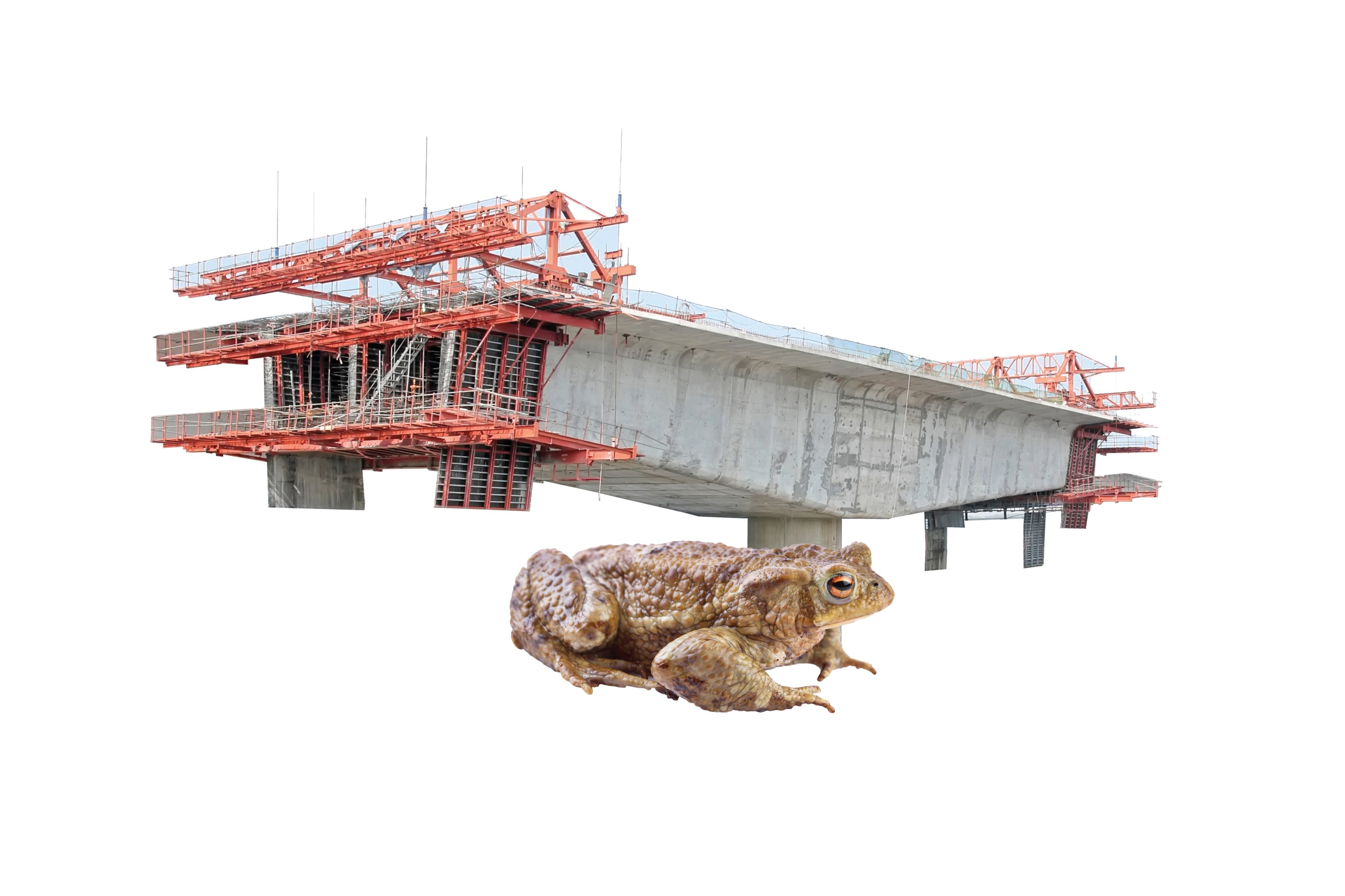 ANDREW MERRITT
ANDREW MERRITTThe devil is in the details. In the case of Ede, for example, there was plenty of amphibian traffic in the toad tunnels. But there were not enough structures-just two tunnels initially, hundreds of meters apart, rather than the 10 or more that scientists had recommended. Many toads that move along the barrier and want to cross the road to get to the breeding pond-they basically gave up because they didn't encounter a crossing structure early enough," says Marcel Huijser, a leading US-based road ecologist and a longtime friend of van der Grift's.
Unexpected impacts and side effects crop up at nearly every crossing. Underpasses-often considered a cheaper alternative-seem to be less popular with many species and are rarely used by butterflies. Many aquatic mammals won't swim into a tunnel where they can't see the other end, but they can be convinced to walk through the same tunnel if a narrow ledge is built above the waterline. On one bridge in the Gooi, a big buck unexpectedly took over, exerting a territorial effect outside of rutting seasons. He acts as a gatekeeper, allowing does to cross but shutting off access to most males.
At the bridge we are standing on, van der Grift is tracking slow worms, armless and legless reptiles that wobble forward like clumsy snakes. Decades after being split by the road and railways, the populations on the east and west sides of the highway had developed distinct genetic profiles. When the bridge opened in 2016, he hoped to see the two populations start to mix. And indeed, DNA testing suggests they are. We see now that the genetic patterns of the populations are getting closer to each other," he says. So there is exchange."
But the ultimate goal is to ensure self-sustaining, healthy, viable animal populations. And it's still unclear whether the defragmentation efforts are accomplishing that. Van der Grift says he and colleagues wrote a plan for a nationwide empirical evaluation of the MJPO program around a decade ago, but it was never funded (MJPO has since concluded and been superseded by other defragmentation plans). Such studies are often considered prohibitively expensive. It can require decades of tracking population sizes to sort the signal from the noise, explains Silviu Petrovan, a zoologist at the University of Cambridge. Some animals, like amphibians, naturally have population numbers that vary greatly from year to year, he says, meaning totals can zigzag due to reasons that have nothing to do with your mediation."
We are now at the stage where the data is coming in-it's really coming through."
Darryl Jones
One animal that seems to have benefited from Dutch defragmentation policies is the badger. In the 1980s there were fewer than 1,200 of them nationwide. Since the country began building under-road badger pipes," their numbers have more than tripled. Models by van der Grift's team strongly indicate that the tunnels have a positive effect on population viability. But no robust scientific study has been carried out to prove it, he says. That would entail decades of population monitoring.
The Netherlands is not alone in its limited assessment of the impact of wildlife crossings. Even when we do enough, we don't do the research for long enough, funded well enough-including a before' setting, including control settings-to be able to conclude that we actually reached our objectives," Petrovan says. Many crossing projects don't even reach the point of clearly defining the objectives they set out to achieve, he says.
Jones strikes a more optimistic tone. We are now at the stage where the data is coming in-it's really coming through," he says. He's particularly encouraged by the ability to do genetic testing: We've got very profoundly useful and effective ways to assess this stuff."
Historically, in the US, conservation has not been the point of animal crossings. Wildlife bridges have so far been seen almost exclusively as traffic safety tools: two dozen or so overpasses built at hot spots for migrating deer and elk. Threatened smaller species barely register among the diverse victims of the highway. Amphibians? Reptiles? Please ..." says van der Grift, summing up how such concerns are typically laughed away.
Most studies of US crossings have tracked their impact on road collisions and insurance claims. There, they excel: When sited correctly, with appropriate fencing, to the target species, we know what wildlife crossings work well over 90% of the time," says Nina-Marie Lister, who leads the Ecological Design Lab at Ryerson University in Toronto. They avoid 90 to 95% of wildlife vehicle collisions. That's an astonishing number in the world of science."
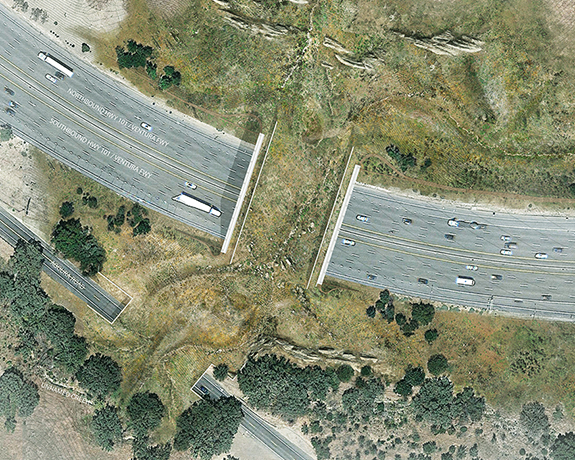
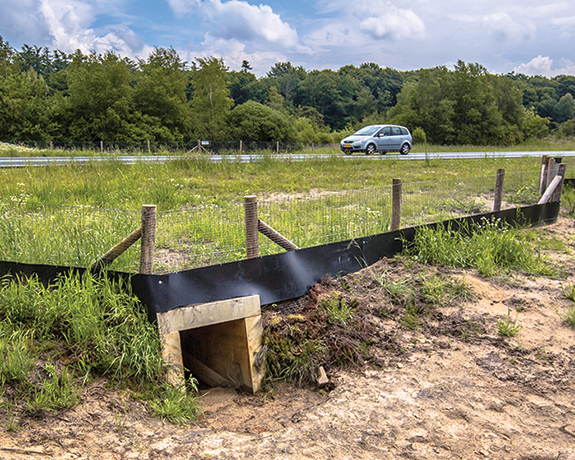
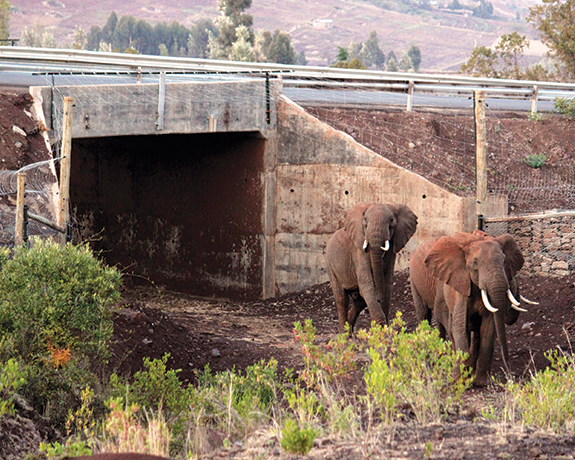
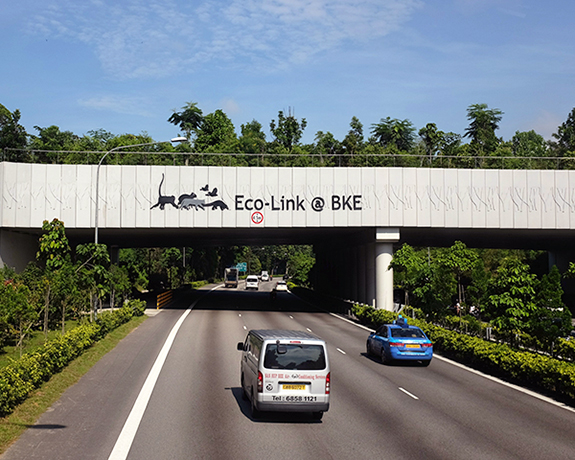
Clockwise from top left: California's mountain lions, Kenya's elephants, Singapore's pangolins, and the Netherlands' amphibians are among the focal points of wildlife crossing developments.
The reduction in property damage and human injury can be significant. In the mid-2010s, for example, a project on State Highway 9 in Grand County, Colorado, added two wildlife bridges, five large arch underpasses, and 10.4 miles of wildlife fencing at a cost of $10 million. The result was an 89% reduction in roadkill. The Center for Large Landscape Conservation, a nonprofit working on ecological connectivity, projected that the crossings would pay for themselves in approximately 22 years, less than a third of the structures' planned 75-year life span.
But if the goal is simply to stop animals from being hit by cars, there is no need for a bridge. You simply could put a fence and prevent them from going entirely, and your mortality would drop to zero," says Petrovan, who conducts research on wildlife crossings for Conservation Evidence, a database of scientific findings about conservation actions. It helps us feel better, because we see fewer individuals killed. But for the population, it doesn't actually give any benefits," he says.
Huijser says the US has been less inclined than his native Netherlands-and almost anywhere else I've worked"-to think about conservation as a goal of crossings. But that is changing. The Infrastructure Investment and Jobs Act, which was signed into law in November and has allocated $350 million for wildlife crossings for the next five years, provides new federal funding for projects and research to reduce wildlife-vehicle collisions as well as connect fragmented areas of habitat. Although that amount is just 0.3% of the bill's $110 billion budget for roads, road ecologists have hailed it as a landmark investment. There is now a publicly funded way to build crossings that target conservation goals, even though collision reduction remains the primary focus, says Rob Ament, senior conservationist at the Center for Large Landscape Conservation. The dedicated funding also means wildlife crossings are no longer competing with potholes for scarce tax dollars. I think it's actually a huge step forward," Ament says. The bill acknowledges that we need to design infrastructure with both things in mind: the needs of people-the movement of goods and people-but also the movement of wildlife," he says. And finally, we're doing that."
But what to build? North America's most influential examples of crossings lie along the Rocky Mountain Front in Canada. The area, which boasts the richest diversity of large mammals on the continent, is bisected by the Trans-Canada Highway. At Banff National Park, a set of 44 wildlife crossings (six overpasses and 38 underpasses) have been built to bridge the gap, creating a linked-up system used by a wide range of species including elk, cougars, and coyotes, as well as rarer animals such as red fox, grizzly bears, wolves, wolverines, snakes, beavers, and lynx.
But Banff's wildlife crossings, like most, suffer from a sort of Horseless Carriage Syndrome, their designs circumscribed by existing infrastructure. Tunnels are often little-adapted culverts, the (usually concrete) tubes that ferry water under roads. And overpasses have generally been borrowed wholesale from roadways-they are built as if they are going to carry the weight of an 18-wheeler and then top-dressed" with foliage, Lister says.
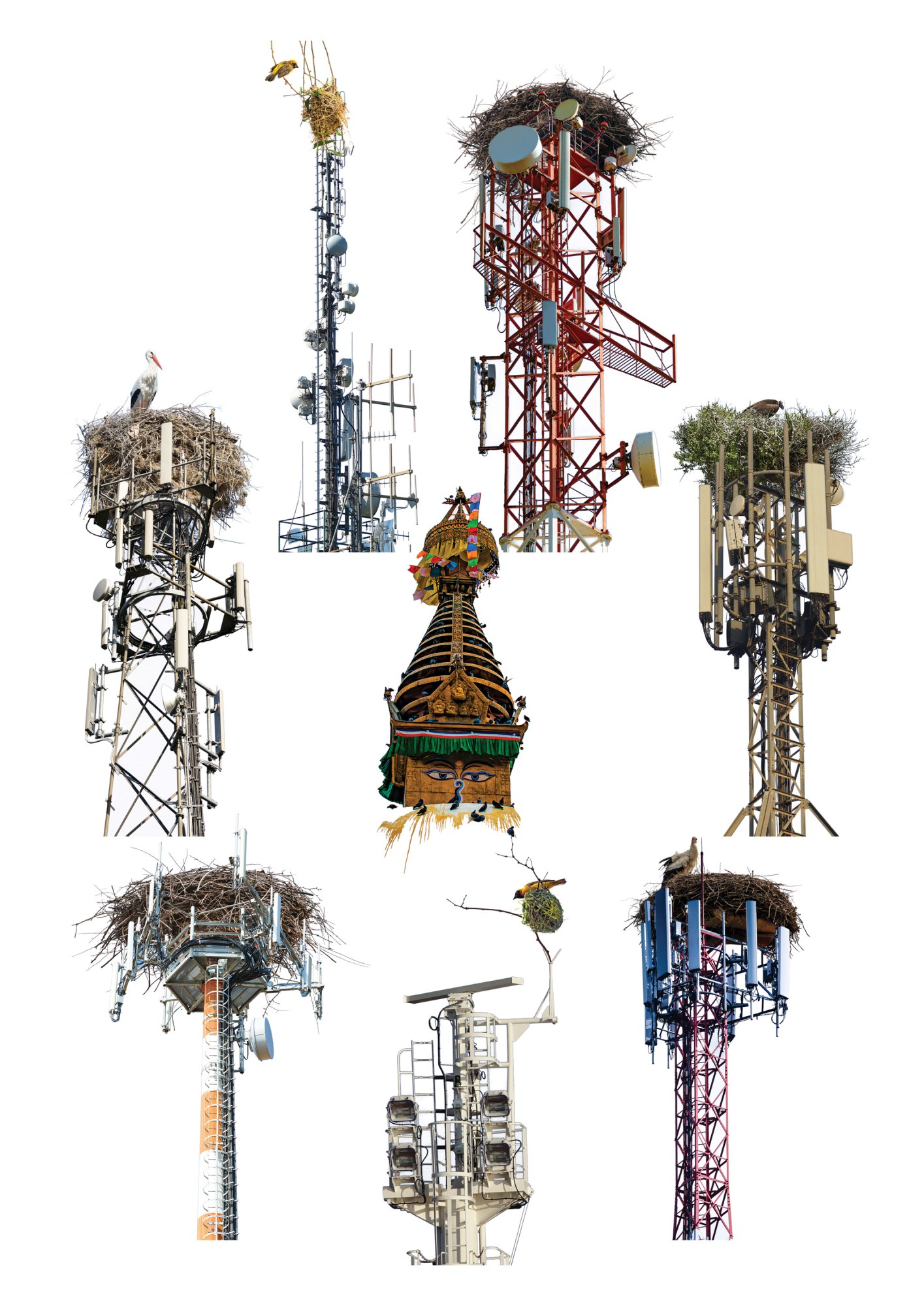 ANDREW MERRITT
ANDREW MERRITTA scattering of experiments are starting to rethink this model. One is the Wallis Annenberg Wildlife Crossing, the $90 million wildlife bridge under construction north of Los Angeles. Designed by architect Robert Rock, it avoids the humped arch of older bridges in favor of a vast flat expanse that needs just one column to support it between mountains and across a highway traversed each day by an estimated 300,000 cars. It is the poster child for innovation," says Renee Callahan, executive director of ARC Solutions, a group that researches how to build better wildlife bridges. It's literally designed for species from mountain lions to mule deer to deer mouse," Callahan says. They're designing it all the way down-to literally the mycorrhizal layer, in terms of the soil, to make sure that the soil itself has the fungal network that can support the native vegetation."
There are many unknowns as construction starts, not least how different species will react to the sheer volume of vehicles passing beneath. The National Park Service will be monitoring activity on the bridge as well as DNA profiles of animals on either side of the freeway. Many are watching to see what will happen with the area's population of mountain lions. Over time, inbreeding has led to genetic abnormalities, like a telltale kink in local cats' tails. The agency predicted that the population would become extinct within decades without a crossing.
Across the US, the infrastructure bill's $350 million falls far short of what will be needed to address the fragmentation created by the country's 4 million miles of public roads. But there are a handful of innovations that could tip the cost-benefit analysis by allowing crossings to be built at lower cost or in places where it was not feasible before.
Animal bridges are currently built only where there is protected land on both sides of the road, as the typical expense of constructing a concrete bridge would be hard to justify on a site that someone might develop in a few years' time. Lighter, cheaper, modular systems could be used in places whose futures are less secure, explains Huijser: If the adjacent lands become unsuitable for wildlife, we take it apart and you can move it."
One candidate material for such modular systems is precast concrete. There's also excitement about fiber-reinforced polymer (FRP), a material less dense than concrete that is made from structural fibers set in resin. FRP has been used to build foot and bike bridges in Europe and a quick-and-easy wildlife bridge in Rhenen, just south of the Gooi in the Netherlands. Currently the Federal Highway Administration does not allow it to be used in traffic infrastructure in the US, but there are growing demands for change. These are barriers that are principally about policy and governance. They're not about science and they're not about technology," says Lister.
They know that the last thing anybody wants is for a big structure, with a lot of publicity, to get built-and then it doesn't work."
Darryl Jones
Designers like Lister and innovators like Callahan are vocal proponents of building wildlife bridges across the country. Road ecologists and wildlife scientists, on the other hand, remain more cautious. They are hypercritical because they know that the last thing anybody wants is for a big structure, with a lot of publicity, to get built-and then it doesn't work. Because everybody will come out of the woodwork and say, See! Waste of time! Complete crap!'" Jones says.
But today even cautious types want to see more built. Although we may not have conducted enough research to have all the answers, it would be dangerous to take that as a signal we should stop, Huijser says. He calls such over-cautiousness a type II error"-a false negative. In this time of mass extinction, it is as if the house is burning down and our solution so far has been to squirt a water pistol at it a few times. To conclude that water isn't the answer would be a mistake.
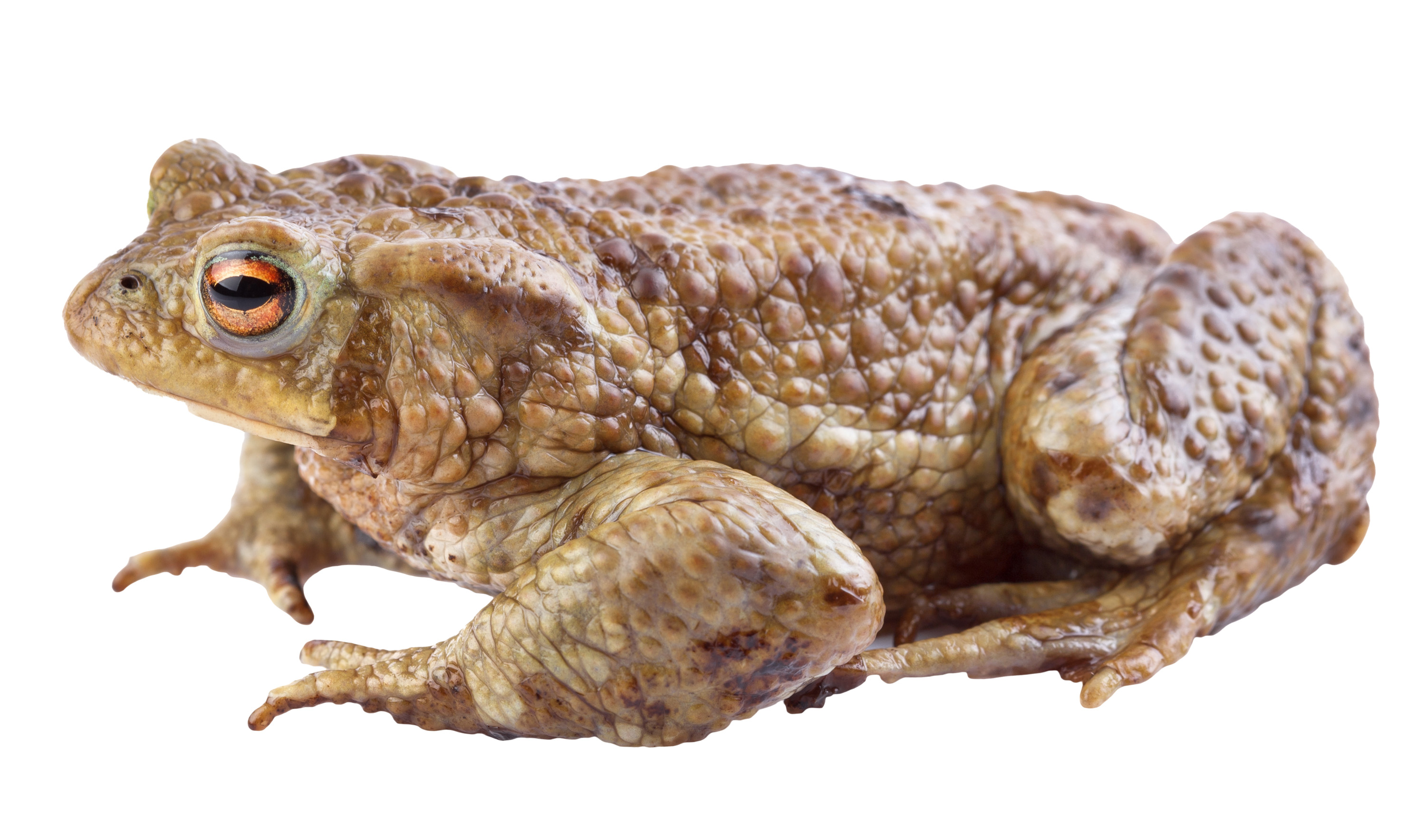
Despite the challenges in Ede and elsewhere, van der Grift says, the answer is learning while building. We still need to invest in the real work of tagging, installing trail cams, and doing DNA testing and long-term population monitoring, he emphasizes. But we must first build more crossings-and the evidence we have so far says to build big and bold. You have to realize that you almost cannot do too much," he says. You do what you think is necessary, study it, and then, nine out of 10 times, you will see, Oh, I should have done more.' But there's no point in waiting until you have figured that out."
Matthew Ponsford is a freelance reporter based in London.